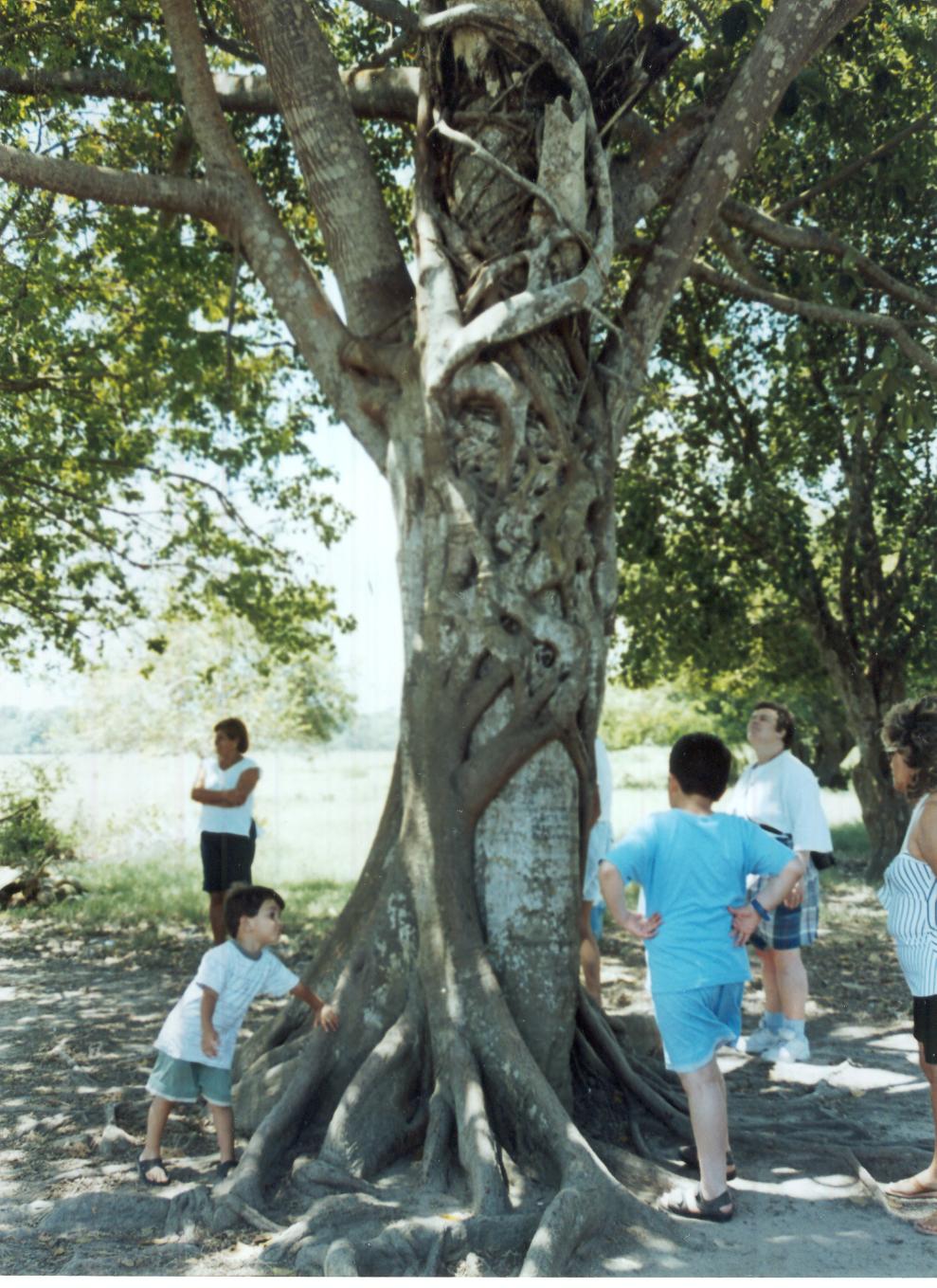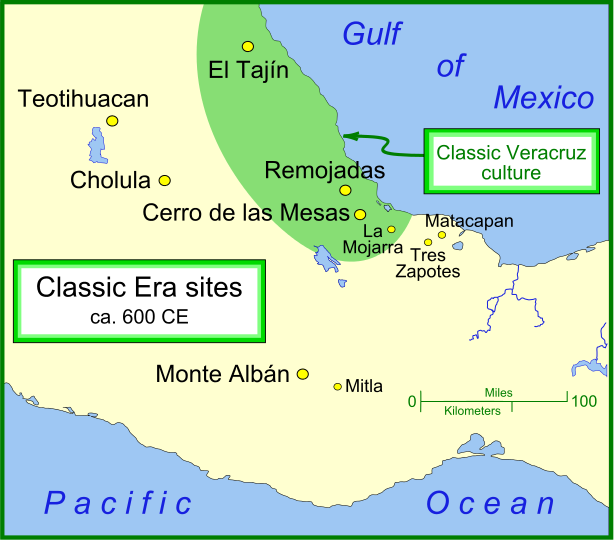|
Tecolutla, Veracruz
Tecolutla is a town and municipality located on the Tecolutla River on the eastern coast of the state of Veracruz in Mexico. It has the closest beaches to Mexico City, and much of its economy is based on tourism, as it is only a four- or five-hour drive from the capital. It is the northern end of a tourist corridor along the Gulf of Mexico called the "Emerald Coast," which extends down to the city of Veracruz. Tecolutla's biggest attraction is its natural settings of wetlands with estuaries, canals and mangroves associated with the river. The town is known for the "Tecolutla Monster,"—probably a dead whale—that was washed ashore in 1969. Its remains are kept at the Marine Museum. The name Tecolutla means "place of the tecolotes or owls." Tourism The most important and growing economic activity in the zone is tourism. Tecolutla has the closest beaches to Mexico City. The town has about 15 km of beaches which face directly onto the Gulf of Mexico. (The municipalit ... [...More Info...] [...Related Items...] OR: [Wikipedia] [Google] [Baidu] |
States Of Mexico
The states of Mexico are first-level administrative territorial entities of the country of Mexico, which is officially named United Mexican States. There are 32 federal entities in Mexico (31 states and the capital, Mexico City, as a separate entity that is not formally a state). States are further divided into municipalities. Mexico City is divided in boroughs, officially designated as or , similar to other state's municipalities but with different administrative powers. List ''Mexico's post agency, Correos de México, does not offer an official list of state name abbreviations, and as such, they are not included below. A list of Mexican states and several versions of their abbreviations can be found here.'' } , style="text-align: center;" , ''Coahuila de Zaragoza'' , , style="text-align: center;" colspan=2 , Saltillo , style="text-align: right;" , , style="text-align: right;" , , style="text-align: center;" , 38 , style="text-align: center;" , , , - , Col ... [...More Info...] [...Related Items...] OR: [Wikipedia] [Google] [Baidu] |
Mangroves
A mangrove is a shrub or tree that grows in coastal saline or brackish water. The term is also used for tropical coastal vegetation consisting of such species. Mangroves are taxonomically diverse, as a result of convergent evolution in several plant families. They occur worldwide in the tropics and subtropics and even some temperate coastal areas, mainly between latitudes 30° N and 30° S, with the greatest mangrove area within 5° of the equator. Mangrove plant families first appeared during the Late Cretaceous to Paleocene epochs, and became widely distributed in part due to the movement of tectonic plates. The oldest known fossils of mangrove palm date to 75 million years ago. Mangroves are salt-tolerant trees, also called halophytes, and are adapted to live in harsh coastal conditions. They contain a complex salt filtration system and a complex root system to cope with saltwater immersion and wave action. They are adapted to the low-oxygen conditions of water ... [...More Info...] [...Related Items...] OR: [Wikipedia] [Google] [Baidu] |
Estuary
An estuary is a partially enclosed coastal body of brackish water with one or more rivers or streams flowing into it, and with a free connection to the open sea. Estuaries form a transition zone between river environments and maritime environments and are an example of an ecotone. Estuaries are subject both to marine influences such as tides, waves, and the influx of saline water, and to fluvial influences such as flows of freshwater and sediment. The mixing of seawater and freshwater provides high levels of nutrients both in the water column and in sediment, making estuaries among the most productive natural habitats in the world. Most existing estuaries formed during the Holocene epoch with the flooding of river-eroded or glacially scoured valleys when the sea level began to rise about 10,000–12,000 years ago. Estuaries are typically classified according to their geomorphological features or to water-circulation patterns. They can have many different names, such as bays, ... [...More Info...] [...Related Items...] OR: [Wikipedia] [Google] [Baidu] |
Spring Equinox (Northern Hemisphere)
The March equinox or northward equinox is the equinox on the Earth when the subsolar point appears to leave the Southern Hemisphere and cross the celestial equator, heading northward as seen from Earth. The March equinox is known as the vernal equinox (spring equinox) in the Northern Hemisphere and as the autumnal equinox in the Southern Hemisphere. On the Gregorian calendar, the northward equinox can occur as early as 19 March or as late as 21 March at 0° longitude. For a common year the computed time slippage is about 5 hours 49 minutes ''later'' than the previous year, and for a leap year about 18 hours 11 minutes ''earlier'' than the previous year. Balancing the increases of the common years against the losses of the leap years keeps the calendar date of the March equinox from drifting more than one day from 20 March each year. The March equinox may be taken to mark the beginning of astronomical spring and the end of astronomical winter in the Northern Hemisphere but m ... [...More Info...] [...Related Items...] OR: [Wikipedia] [Google] [Baidu] |
Totonac
The Totonac are an indigenous people of Mexico who reside in the states of Veracruz, Puebla, and Hidalgo. They are one of the possible builders of the pre-Columbian city of El Tajín, and further maintained quarters in Teotihuacán (a city which they claim to have built). Until the mid-19th century they were the world's main producers of vanilla. Etymology The term "totonac" refers to the people living in Totonacapan. There is no agreement as to the origin of the term. Some authors have translated the term "totonac" as a Nahuatl word meaning "People of Hot Land". The translation for this word in the Totonac Language, according to sources, is "toto-nacu" meaning "three hearts" signifying their three cities or cultural centers: Cempoala, Tajin and Teayo. Evidence, however, is inconclusive. Geography and traditional lifestyle In the 15th century, the Aztecs labeled the region of the Totonac "Totonacapan"; which then extended roughly from Papantla in the north to Cempoala i ... [...More Info...] [...Related Items...] OR: [Wikipedia] [Google] [Baidu] |
El Tajín
El Tajín is a pre-Columbian archeological site in southern Mexico and is one of the largest and most important cities of the Mesoamerican chronology, Classic era of Mesoamerica. A part of the Classic Veracruz culture, El Tajín flourished from 600 to 1200 CE and during this time numerous temples, palaces, Mesoamerican ballcourt, ballcourts, and pyramids were built. From the time the city fell, in 1230, to 1785, no European seems to have known of its existence, until a government inspector chanced upon the Pyramid of the Niches. El Tajín, named after the Totonac rain god, was named a World Heritage site in 1992, due to its cultural importance and its architecture. This architecture includes the use of decorative niches and cement in forms unknown in the rest of Mesoamerica. Its best-known monument is the Pyramid of the Niches, but other important monuments include the Arroyo Group, the North and South Ballcourts and the palaces of Tajín Chico. In total there have been 20 ball ... [...More Info...] [...Related Items...] OR: [Wikipedia] [Google] [Baidu] |
Coconut Custard
Coconut jam, also known as kaya jam or simply kaya, is a sweet spread made from a base of coconut milk, eggs and sugar. It is popular throughout Southeast Asia. Indonesia, Malaysia and Singapore The word for coconut jam in the Malay language, kaya, means rich, referencing the texture of the popular food. For Malaysians, Indonesians and Singaporeans, kaya, also called srikaya (coconut egg jam), is a sweet creamy coconut spread made from coconut milk (locally known as santan) and duck or chicken eggs (which are flavored with pandan leaf and sweetened with sugar). The resulting color varies depending on the color of the egg yolks, the amount of pandan, and the extent of the caramelization of the sugar. As a popular local spread, kaya is typically spread on toast to make kaya toast and eaten in the morning, but is also enjoyed throughout the day. Kaya can be found in most kopitiam and night markets. Different varieties available include the nyonya kaya, which is of a lighter-gree ... [...More Info...] [...Related Items...] OR: [Wikipedia] [Google] [Baidu] |
Tarpon
Tarpons are fish of the genus ''Megalops''. They are the only members of the family Megalopidae. Of the two species, one (''M. atlanticus'') is native to the Atlantic, and the other (''M. cyprinoides'') to the Indo-Pacific Oceans. Species and habitats The two species of tarpons are ''M. atlanticus'' (Atlantic tarpon) and ''M. cyprinoides'' (Indo-Pacific tarpon). ''M. atlanticus'' is found on the western Atlantic coast from Virginia to Brazil, throughout the Caribbean and the coast of the Gulf of Mexico. Tarpons are also found along the eastern Atlantic coast from Senegal to South Angola." Megalops atlanticus", www.fishbase.org, 11 February 2010. ''M. cyprinoides'' is found along the eastern African coast, throughout Southeast Asia, Japan, Tahiti, and Australia. Both species are found in both marine and freshwater habitats, usually ascending rivers to access freshwater marshes." Megalops cyprinoides", www.fishbase.org, 11 February 2010. They are able to survive in brackis ... [...More Info...] [...Related Items...] OR: [Wikipedia] [Google] [Baidu] |
Black Sea Bass
The black sea bass (''Centropristis striata'') is a species of marine ray-finned fish, a sea bass from the subfamily Serraninae which is part of the family Serranidae, which also includes the groupers and anthias. It is found in the western Atlantic Ocean, where it is an important species for commercial and recreational fisheries. Description The black sea bass has an oblong, laterally compressed body. It has a large mouth, armed with bands of teeth on the jaw and with a triangular patch of teeth in the front part roof of the mouth and more teeth along the sides of that area, the mouth extending as far as below the middle of the eye. The preopercle has fine serrations on its margin and is evenly rounded, while the gill cover bears three flat spines. The dorsal fin has ten spines, the front spines being longer than the rearmost, and 11 soft rays. The membranes between the spines of the dorsal fin are deeply notched. The anal fin has three spines and seven soft rays. The caudal fi ... [...More Info...] [...Related Items...] OR: [Wikipedia] [Google] [Baidu] |
Shad
The Alosinae, or the shads,Alosinae are a of fishes in the family . The subfamily comprises seven genera worldwide, and about 30 species. [...More Info...] [...Related Items...] OR: [Wikipedia] [Google] [Baidu] |






